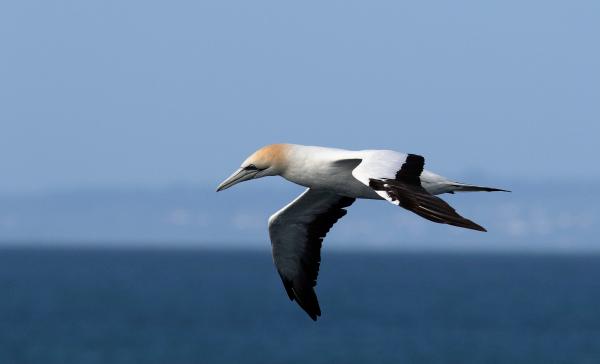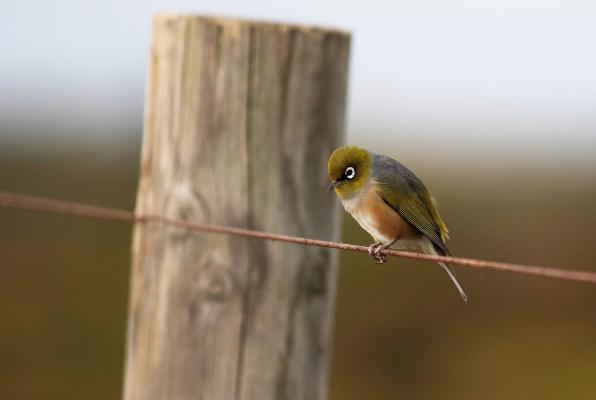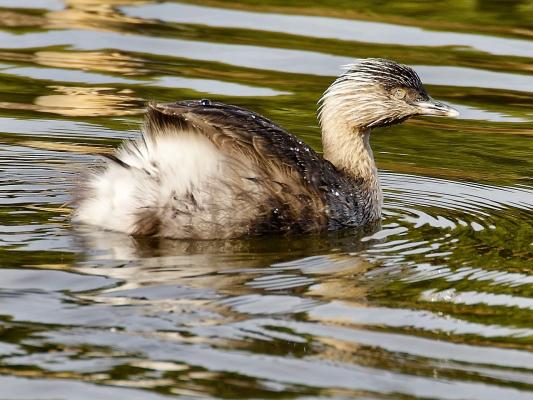I recently spent half an hour at the peak of Mount Donna Buang near Warburton, and just missed the snow that fell later that day.
Needless to say, there were no birds to be seen at the top of the mountain, but there were beautiful king parrots, crimson rosellas, satin bowerbirds, brown thornbills, kookaburras, pied and grey currawongs and many magpies in the Yarra Valley.
I searched for robins, as there are a few lovely habitats such as La La falls which seem perfect for pink and rose robins, but alas, I did not spot any although I saw an eastern yellow robin at the falls.
I think it was too cold in the valley for small birds as well, and the robins have probably dispersed to coastal areas.
Around the Bellarine, I saw a flock of around seven cattle egrets at Marcus Hill. Cattle egrets are one of the six egret species found in Australia, and of these three are commonly seen around the Bellarine, namely little, cattle and great egrets.
Cattle egrets move around Australia in response to the seasons and are mainly seen in southern Australia in winter. They have been known to fly to New Zealand and Tasmania from mainland Australia in winter and then return in the spring to breed.
I returned to the Bellarine from Warburton via the Queenscliff ferry and braved the freezing conditions on the deck to observe the colony of Australasian gannets that live on Pope’s Eye. These magnificent birds change their body shape into an arrow when they plummet into the water when fishing and I’ve been trying for many years to take a decent photo of this, but have always failed.
One gannet flew close to the ferry, so I managed a half decent flying image. There still appeared to be many young gannets on Pope’s Eye that have not yet fledged. Gannets breed from July through to February, and the hatchlings take around 100 days or three months to fledge, so the February batch must be just about ready to take off.
On the subject of breeding, I saw a black swan sitting on a nest at Western Treatment Plant. Tom Fletcher informed me that swans breed all year around, which means that the parent birds and chicks must be very well insulated against the cold extremes of winter.
At Western Treatment Plant I saw a silvereye that had flown from Tasmania. Silvereyes are another species of small bird that move around when the daylight is reduced and the weather cooler.
The mainland birds fly north up the east coast of Australia and the Tasmanian birds fly across Bass Strait. Tasmanian silvereyes have rich brown plumage colour to their flanks, whereas the mainland birds have grey flanks.
I received an email from Patrick, who saw a white-faced heron on the beach track at Ocean Grove heading to Barwon Heads.
It didn’t seem afraid of Patrick and his son but it did occasionally hide behind the bushes. White-faced herons are common birds and usually seen anywhere where there is water, namely on reefs, in rock pools and mudflats by the coast, in estuaries and saltmarsh, swamps, rivers, and at farm dams. I wonder if the bird was resting near the path in the dunes after feeding.
I received an email from Kevin, who found plenty of old favourites at Lake Victoria near Point Lonsdale. There were the usual cormorants, including three greats sunning themselves on a raft in the Emily Street lake. There was also a pair of hoary-headed grebes on the same lake.
A couple of whistling kites flew over Lake Victoria. A small flock of white-fronted chats also flew in and landed on the shallows.
Other birds included great egrets, Pacific black ducks, many teal, a few black swans, and a melodious grey butcherbird.
I received an interesting email from keen birdwatcher, Michelle from Ocean Grove. Michelle and her husband saw a bird that they identified as a spangled drongo. These birds are more often seen in northern Australia and in coastal areas of New South Wales.
They are migratory and move between Western Australia, Northern Territory, northwards to Indonesia and New Guinea.
Some drongos in the south-east and central-east, however, remain in the same area or head south, occasionally turning up in Tasmania. A spangled drongo was seen at Anglesea Heath in April 2016.











